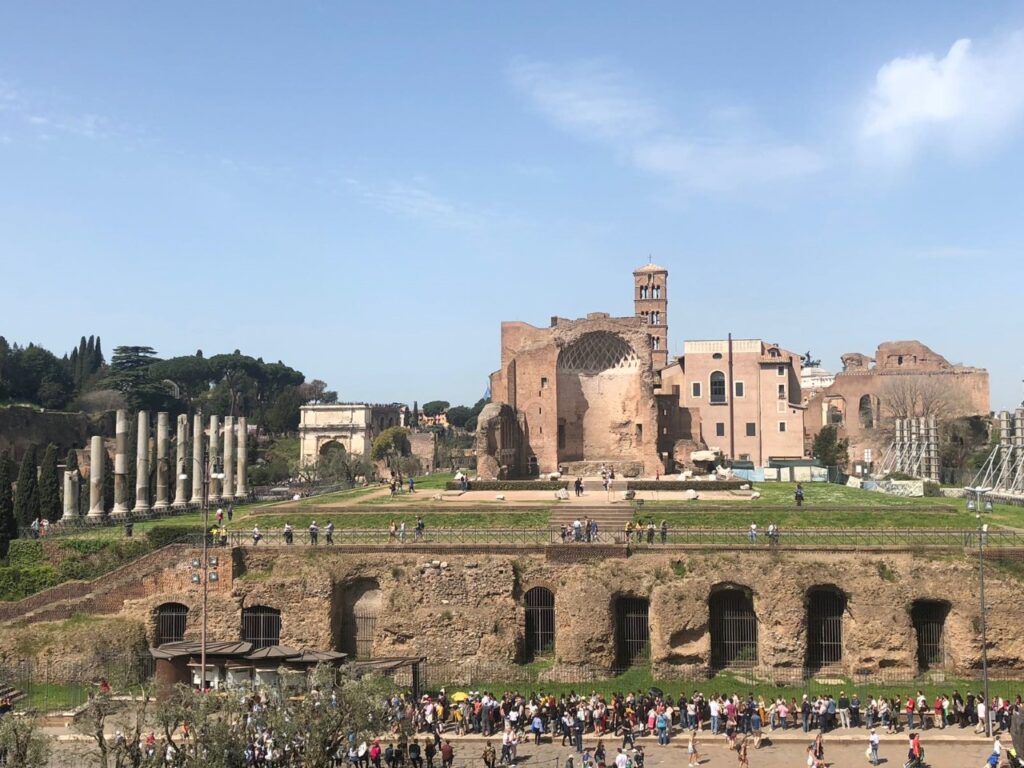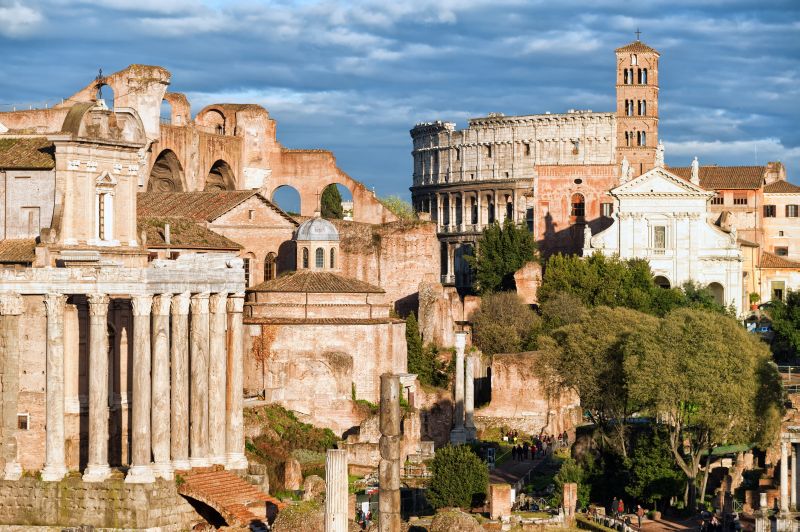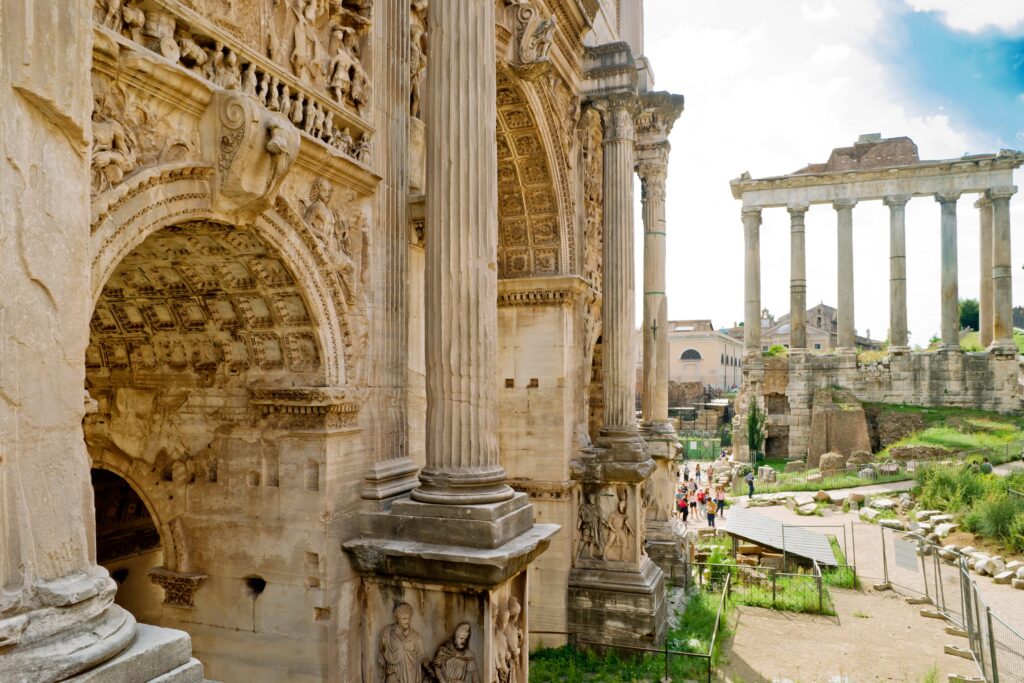Call Anytime
Tour of Rome Colosseum
- Home
- Tour of Rome Colosseum



Tour of Rome Colosseum: Unveiling Ancient Majesty & Historical Depths
Tour of Rome Colosseum | You will be surprised by the size and majesty of the Colosseum, the largest and most beautiful monument of antiquity. Despite its massive appearance, its proportions are admirable. The architect who created it avoided monotony by playing with space and different architectural themes. It is wonderfully illuminated in the evening, and the powerful lighting perfectly highlights its three types of columns: Doric, Ionic, and Corinthian. The restoration works of recent years have made it possible to visit the upper floors from where you have an excellent view of the imposing rooms where the machinery allowed all the shows to be held: fights, games, and aquatic parties. Despite the beauty of this monument, it is difficult to help but think, looking at the arena, of the thousands of men and beasts who were massacred there for the sole pleasure of the crowd gathered in the stands. We have often tried to know how and why the Romans came to derive pleasure from all these massacres of elephants, lions, and other wild animals, from these gladiatorial fights, and the torture of thousands of Christians and condemned men. In his satire, Juvenal accused the people of having sold themselves for bread and circuses, while the educated Romans disapproved of these horrible spectacles.
Panoramic Vistas: A Highlight of Your Tour of Rome Colosseum
Ascend to the upper levels during your Tour of Rome Colosseum and be rewarded with unparalleled views of Rome. The Roman Forum, the Arch of Constantine, the Temple of Venus and Rome, the Romanesque bell tower of Santa Francesca Romana, and the magnificent Arch of Titus all come into sharp focus.
Our Colosseum tours delve into the monument’s origins, tracing its construction from Vespasian’s vision on the grounds of Nero’s Domus Aurea to its completion under Titus and Domitian. Originally known as the Amphitheatrum Flavium, in honor of the Flavian dynasty, it later adopted the name Colosseum. The famous prophecy, “As long as the Colosseum stands, Rome shall stand; when the Colosseum falls, Rome shall fall; when Rome falls, the world shall 1 fall,” underscores its enduring significance. The debate surrounding its name – whether it stems from its colossal size or the nearby statue of Nero – adds another layer of intrigue to your Tour of Rome Colosseum.
Echoes of Ancient Grandeur Amidst Modern Roman Transformation
Our Tour of Rome Colosseum offers a portal to the heart of ancient Rome, but the city’s story extends far beyond its imperial past. From the grandeur of the Colosseum, witness to centuries of history, to the dynamic urban landscape of modern Rome, the city presents a captivating blend of old and new.
Following the era of imperial Rome, the city navigated the challenges of Protestantism, the sack of Rome, and the Counter-Reformation. During this time, the Church’s resurgence led to the construction of magnificent churches, reflecting a period of renewed prosperity. Sixtus V’s financial reforms paved the way for the Baroque era, culminating in the artistic brilliance of Gian Lorenzo Bernini.
In 1870, Rome transitioned into the capital of a unified Italy, triggering significant urbanization. This period, further amplified under Mussolini’s rule, transformed Rome into a hub of governmental activity, rivaling even Brussels in its concentration of civil servants. Today, Rome’s population exceeds three million, showcasing a city in constant evolution. While the city’s administration, housed in Michelangelo’s Palazzo Senatorio, strives to manage this growth, Rome’s unique character persists, evident in its ancient aqueducts supplying pristine spring water to its magnificent fountains.
The Engineering Marvel Behind Your Tour of The Colosseum
As you explore the Colosseum during your Tour of Rome Colosseum, consider the remarkable engineering feats that made its construction possible. After draining the artificial lake that once occupied the site, Roman architects laid a foundation of pozzolana, a volcanic cement, reaching 7.50 meters in depth. The sheer scale of the Colosseum, designed to accommodate 60,000 spectators, demanded ingenious solutions. Circular walls of tuff and barrel vaults were employed to support the massive stands and corridors, showcasing the advanced construction techniques of the time.
Why Choose Our Tour of Rome Colosseum?
Expertly Guided Tours: Gain in-depth historical insights and captivating stories.
Stunning Panoramic Views: Capture unforgettable moments from the upper floors.
Historical Context: Understand the complexity of the Colosseum’s past.
Convenient Access: Maximize your time with efficient tour planning.
Memorable Experience: Create lasting memories of this ancient wonder.
Book your Tour of Rome Colosseum today and step into the heart of Roman history.
To Book Your Tour of Rome Colosseum Get In Touch With Us!


